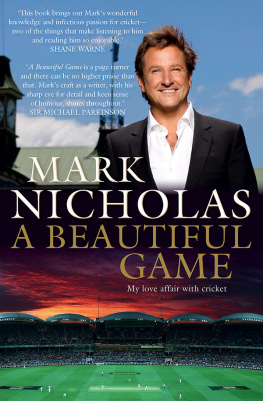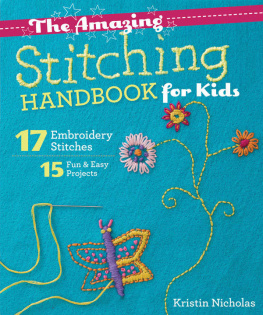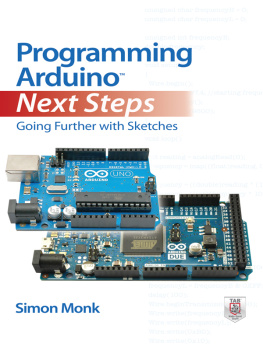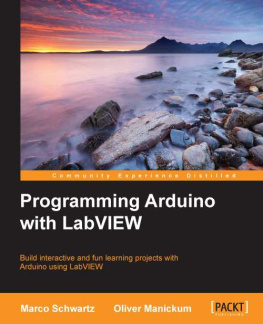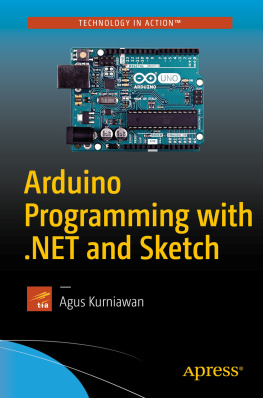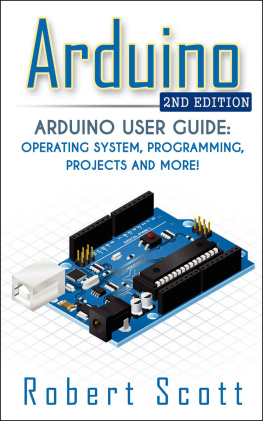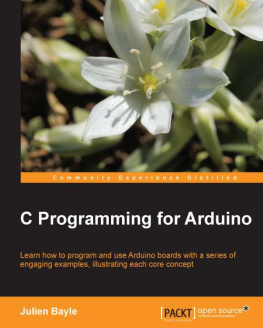Nicholas - Arduino Programming: Tip and Tricks to Learn Arduino Programming Efficiently
Here you can read online Nicholas - Arduino Programming: Tip and Tricks to Learn Arduino Programming Efficiently full text of the book (entire story) in english for free. Download pdf and epub, get meaning, cover and reviews about this ebook. year: 2020, genre: Computer. Description of the work, (preface) as well as reviews are available. Best literature library LitArk.com created for fans of good reading and offers a wide selection of genres:
Romance novel
Science fiction
Adventure
Detective
Science
History
Home and family
Prose
Art
Politics
Computer
Non-fiction
Religion
Business
Children
Humor
Choose a favorite category and find really read worthwhile books. Enjoy immersion in the world of imagination, feel the emotions of the characters or learn something new for yourself, make an fascinating discovery.

Arduino Programming: Tip and Tricks to Learn Arduino Programming Efficiently: summary, description and annotation
We offer to read an annotation, description, summary or preface (depends on what the author of the book "Arduino Programming: Tip and Tricks to Learn Arduino Programming Efficiently" wrote himself). If you haven't found the necessary information about the book — write in the comments, we will try to find it.
Arduino Programming: Tip and Tricks to Learn Arduino Programming Efficiently — read online for free the complete book (whole text) full work
Below is the text of the book, divided by pages. System saving the place of the last page read, allows you to conveniently read the book "Arduino Programming: Tip and Tricks to Learn Arduino Programming Efficiently" online for free, without having to search again every time where you left off. Put a bookmark, and you can go to the page where you finished reading at any time.
Font size:
Interval:
Bookmark:
- Does not require an external programmer
- Works well with a dedicated compiler
- You can buy an "infinite" number of expansion boards (e.g., motor controllers, displays, executive modules)
- A huge number of ready-made solutions. Various projects are created on Arduino. If you came up with something "new" and interesting, then 90% someone has already done it on Arduino earlier and posted a description of the project on the Internet.
- The popularity of the platform has meant that manufacturers have prepared countless tile varieties and extensions - you will find more about this later in the book.
- A large number of users make it easier to find help when they get stuck in an important point of the project.
- Power supply via USB cable
- Powered by a plug-in power supply (optimally 7V - 12V) or batteries

- USB connector - used for power supply, programming, and communication with a computer
- Power connector (optimally 7V - 12V)
- Voltage stabilizer - the input voltage from connector 2 is reduced to 5V thanks to this system
- Reset button - resets the Arduino board
- Microcontroller responsible for communication with the computer via USB
- Programming connector for the microcontroller from step 5.
- Signal connector *
- Signal connector *
- LED diode signaling connection of voltage to Arduino
- Programmer output for the microcontroller from point 13.
- Signal connector *
- Power connector *
Font size:
Interval:
Bookmark:
Similar books «Arduino Programming: Tip and Tricks to Learn Arduino Programming Efficiently»
Look at similar books to Arduino Programming: Tip and Tricks to Learn Arduino Programming Efficiently. We have selected literature similar in name and meaning in the hope of providing readers with more options to find new, interesting, not yet read works.
Discussion, reviews of the book Arduino Programming: Tip and Tricks to Learn Arduino Programming Efficiently and just readers' own opinions. Leave your comments, write what you think about the work, its meaning or the main characters. Specify what exactly you liked and what you didn't like, and why you think so.


